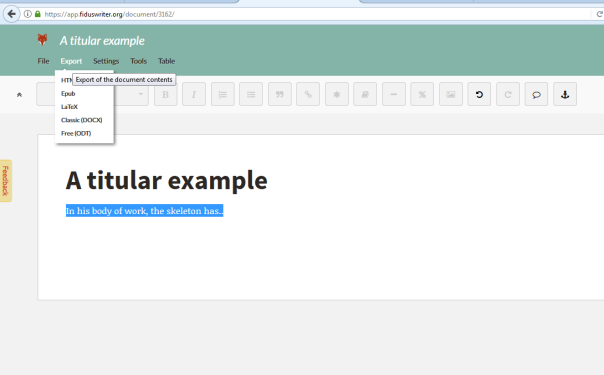Grants
UNESCO Chair in Cultural Visualisation and Heritage
- UNESCO and CURTIN signed.
- Now writing up Research Fellow and 2 PhD positions
- Will re-contact proposed advisory board
- Drafting up specs for PCs/MACs, Blog post here.
GLAMVR project (MCCA School Strategic Research grant, $12,700, CI., with colleagues from MCCA)
- Digital Heritage: Workflows & issues in preserving, exporting & linking digital collections (especially heritage collections for GLAM.
- Scholarly Making: Encourage makerspaces & other activities in tandem with academic research.
- Experiential Media: Develop AR/ VR & other new media technology & projects esp. for humanities.
The symposium/workshop is now over (my blog post here, EVENTBRITE details here, twitter feed here), cultural hackathon next. VR equipment has already started to arrive.
ARC-Linkage Grant Proposal
Working on proposal with Dr Stuart Bender and A. Prof Michael Broderick (Murdoch), based on Fading Lights.
WAND
Small Grant WAND application, advisor: (submission by Michael Ovens, CI., UWA). See Michael’s blog https://thineenemyproject.wordpress.com/
DAAD
https://www.universitiesaustralia.edu.au/global-engagement/international-collaboration/international-agreements-and-activities/Australia–Germany-Joint-Research-Cooperation-Scheme#.V1Y5xOckjuA
Submitted “Travelling heritage – exploring mixed realities for the digital reuse of cultural materials” application with colleagues and U of Hamburg and Leuphana. Results due November.
OTHER
CAA ‘Other’ Session (CAA2017, Atlanta)
Title “Mechanics, Mods and Mashups: Games of the Past for the Future Designed by Archaeologists” and blog post here.
Archaeologists and people of a historical persuasion:
- Either take a game with an inspiring concept, technique or mechanic
- OR extrapolate a current or past game to a game or simulation of the future
- OR they share their vision of a game or simulation that reveals, expresses or augments their own research.
At the workshop the writers will either:
- Bring their own designs, video cut-scenes, and illustrations and media depicting what this new vision would look like
- OR have some form of play-testing demonstration, cards, or illustrations or physical play-throughs (preferably involving the CAA workshop audience) revealing how this new level, mod or gameplay episode COULD be experienced or how it could be revealed.
The writers will:
Ask the audience to play through or role-play the actions that would be in the creative piece.
The audience will:
Give the writers feedback ideas and nominate the best presentation in terms of fun and engagement, imaginative ideas, and archaeological relevance (in promoting archaeology, teaching archaeology or extending archaeological scholarship).
PENDING PUBLICATIONS
Books
- Benardou, A., Champion, E, Dallas, C., and Hughes, L., (). (2017: In press). Cultural Heritage Digital Tools and Infrastructures. Routledge, UK. https://www.routledge.com/products/9781472447128. ISBN 9781472447128.
Book chapter
- Champion, E. (2017: in press). “The Role of 3D Models in Virtual Heritage Infrastructures” in Benardou, A., Champion, E, Dallas, C., and Hughes, L. (Eds.). (2017). Cultural Heritage Digital Tools and Infrastructures. Routledge, UK. https://www.routledge.com/products/9781472447128. ISBN 9781472447128.
Book review
- Champion, E. (2016). Heritage and Social Media: Understanding heritage in a participatory culture [Book Review]. Heritage & Society, 8(2). In press.
Journal article
- Champion, E. (2016: accepted). Digital Humanities is Text-heavy, Visualization-light and Simulation-poor. Digital Scholarship in the Humanities (DH2015 Special issue).
- Champion, E. (2016: in press). Bringing Your A-Game To Digital Archaeology: Why Serious Games And Virtual Heritage Have Let The Side Down And What We Can Do About It. SAA Archaeological Record: Forum on Digital Games & Archaeology (special issue).
- Champion, E. (2016: accepted, I think!). Worldfulness, Role-enrichment & Moving Rituals: Design Ideas for CRPGs. Transactions of the Digital Games Research Association (ToDIGRA), (special issue, selected DiGRA2015 conference papers). URL: http://todigra.org/index.php/todigra/index
- Champion, E. (2016: accepted). Ludic Challenges For New Heritage and Cultural Tourism. International Journal of Mediterranean Archaeology & Archaeometry, (special issue, selection of VAMCT2015 conference papers). URL: maajournal.com International Journal MAA (ISI Arts & Humanities Citation Index, Thomson Reuters, USA; Scopus) scheduled for Dec 2016, Vol.16, No.5.
Conference paper/session
- Champion, E. (2017: accepted). “Mechanics, Mods and Mashups: Games of the Past for the Future Designed by Archaeologists”. Other session, Computer Applications and Quantitive Methods in Archaeology (CAA), Atlanta, Georgia, USA, 14-16 March, 2017. URL: http://caaconference.org/
- Champion, E. (2016: accepted). Virtual Heritage Infrastructure. 14th EUROGRAPHICS Workshop on Graphics and Cultural Heritage, 5-7 October 2016, Genova, Italy. URL: http://gch2016.ge.imati.cnr.it/.
Upcoming talks
- Talk at Aula Silvio Trentin (Aula Magna) of Ca’ Foscari University, in Palazzo Ca’ Dolfin, organized by Ca Foscari University, Venice, 3 October.
- The EUROGRAPHICS GCH conference as above, in Area della Ricerca di Genova, Via De Marini 6, 16149 Genova (Genoa), 5-7 October.
- Talk at Spazju Kreattiv (the National Centre for Creativity), Malta, 12 October.
STILL TO FINISH WRITING
Books
- Champion, E. (2017: in process). Phenomenology, Place and Virtual Place. Routledge.
- Champion, E. (2017: accepted). DESIGNING THE ‘PLACE’ OF VIRTUAL SPACE. Indiana University Press, Spatial Humanities series.
- Champion, E. (2017: contracted). Organic Design in Twentieth-Century Nordic Architecture, Routledge.
Book Chapters
- Champion, E. (2017: invited). 3D models and cultural heritage. Open access book chapter with Herder-Institut für historische Ostmitteleuropaforschung. Details to be updated.
- Champion, E. (2017: invited). “State of the Art: A Critical Review of Games and Game-Like Simulations Relevant to Digital Archaeology and Digital Cultural Heritage” in Jimenez, D. (Eds.). (2017). Title to be confirmed, redTDPC, Mexico.
- Champion, E. (2017: in process). “The Missing Theory of Virtual Places”In Malpas, J. (Ed). Virtuality and Place. Provisional. In discussion with Bloomsbury/Malpas.






